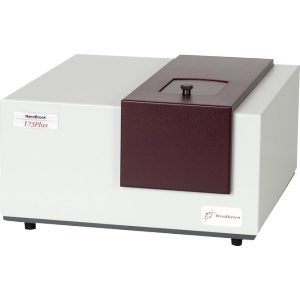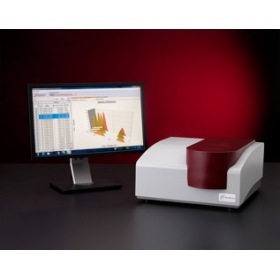锤子
ZetaPALS Zeta电位测量应用案例-20
- 类别:分析方法/应用文章
- 上传人:美国布鲁克海文
- 上传时间:2014/11/19 9:40:10
- 文件大小:15K
- 下载次数:2
-
消耗积分 : 免积分
简介:
This paper investigates the feasibility of arsenate removal by aggregated metal oxide nanoparticle media in packed bed columns. Batch experiments conducted with 16 commercial nanopowders in four water matrices were used to select a metal oxide nanoparticle that both amply removes arsenate and can be aggregated using an inert binder. TiO2, Fe2O3, ZrO2 and NiO nanopowders, which exhibited the highest arsenate removal in all water matrices, were characterized with fitted Freundlich adsorption isotherm (View the MathML source) parameters. In 10 mM NaHCO3 buffered nanopure water and at both pH ≈ 6.7 and 8.4, K ranged from 1.3 to 12.09 (mg As/g(media)) (L/mg As)1/n, and 1/n ranged from 0.21 to 0.52. Under these conditions, the fitted Freundlich isotherm parameters for TiO2 nanoparticles aggregated with inorganic and organic binders (K of 4.75–28.45 (mg As/g(media)) (L/mg As)1/n and 1/n of 0.37–0.97) suggested favorable arsenate adsorption. To demonstrate that aggregated nanoparticle media would allow rapid mass transport of arsenate in a fixed bed adsorber setting, short bed adsorber (SBA) tests were conducted on TiO2 nanoparticle aggregates at empty bed contact times (EBCT) of 0.1–0.5 min and Re × Sc = 1000 and 2000. These SBA tests suggested that the binder has a negligible role in adsorbing arsenic and that mass transport is controlled by rapid intraparticle diffusion rather than external film diffusion.
打开失败或需在电脑查看,请在电脑上的资料中心栏目,点击"我的下载"。建议使用手机自带浏览器。
相关产品更多>>
下载该资料的还下载了
推荐学习更多>>
- 注意:
- 1、下载文件需消耗流量,最好在wifi的环境中下载,如果使用3G、4G下载,请注意文件大小。
- 2、下载的文件一般是pdf、word文件,下载后如不能直接浏览,可到应用商店中下载相应的阅读器APP。
- 3、下载的文件如需解压缩,如果手机没有安装解压缩软件,可到应用商店中下载相应的解压缩APP。



































